A lot of people use wood to partially or completely heat their homes in winter. Modern wood burning stoves are much more efficient and pollute much less than older models. If you want to heat your house partially or completely with wood, and have some acreage to grow you own fuel, black locust is the best tree for several reasons. Here’s why you should grow Black Locust Firewood.
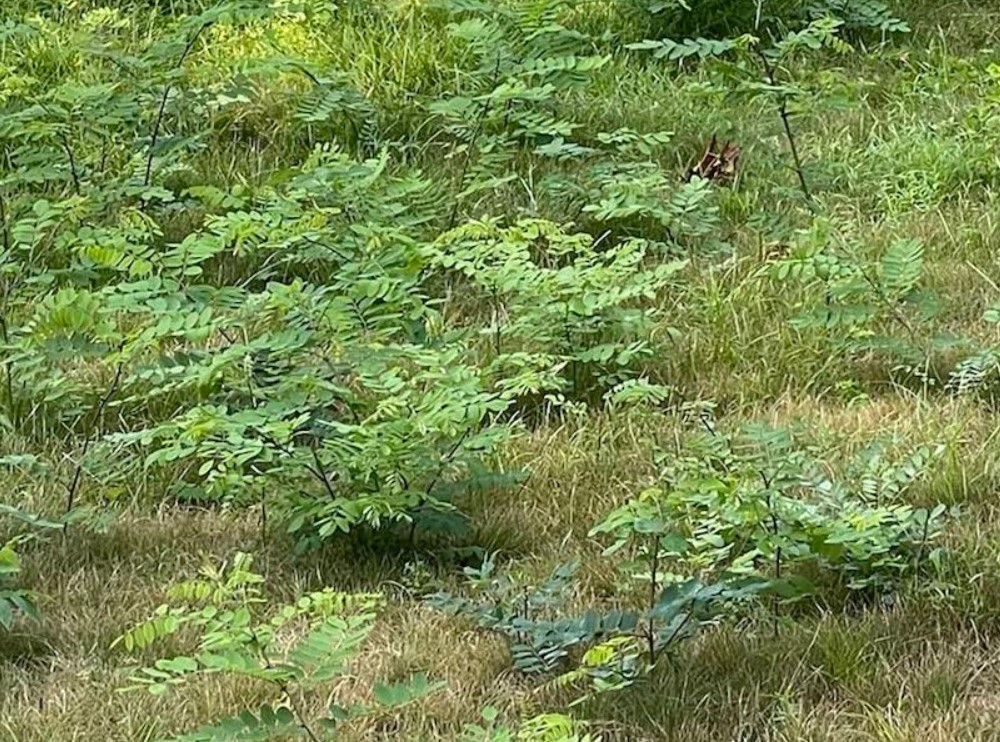
- It has a fast growth rate. In general, trees with soft wood grow fast and those with hard wood grow slow. Black locust is an exception. It produces hard wood and grows faster than many soft wood trees. When young, they can grow up to 4 feet per year. As they mature, they slow down to about 2 feet per year.
- Black locust has very dense wood. A full cord of seasoned white pine weighs about 2,200 pounds, while a cord of black locust weighs over 4,000 pounds. Because of its density, it has more BTUs, or heat energy, than most other woods. According to this chart, a cord (A cord is a stack of wood 8; long, 4′ wide and 4′ deep) of black locust has 29.3 Million BTUs. By contrast, a cord of white pine has just half as many BTUs. The only trees in our area which produce firewood with more BTUs are white oak and Osage orange (Also known as hedge apple because of its fruit).
- It burns very well. Black locust produces very little smell, smoke, ash or creosote. A build-up of creosote in your chimney can cause a chimney fire, so it’s good to use woods which burn hot and produce very little of it. Black locust also produces good coals, and has a long burn time. This is a good thing if you don’t want to get up in the middle of the night and add more wood to your fire.
- Black locust produces seeds like other trees, but it also propagates by sending up suckers from its root system. This means that when you begin harvesting firewood, you won’t need to replant. The suckers will take care of that for you. This suckering can also be a pain and black locust can take over and crowd out other trees. I recommend that you leave space around your black locust woodlot that you can mow to keep the suckers under control.
How Much Acreage Do I Need?
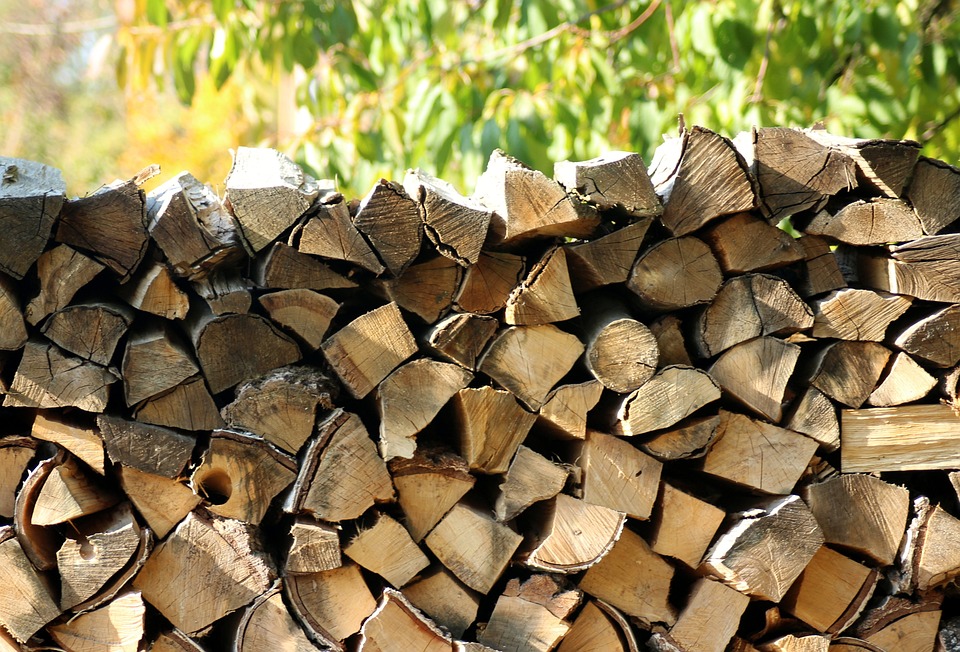
It appears that the general consensus is that you will need 2 full cords of firewood to heat a 1,000 square foot house through an Indiana winter. Please note that this is a rough estimate and will be affected by factors such as your home’s insulation, the efficiency of your wood stove, the severity of the winter and so on. Therefore, if you have a 2,000 square foot house, you will need 4 full cords.
With a sustainably managed woodlot, you should be able to harvest 1/3 to 1/2 cords per acre annually. Your 2,000 square foot home will need 8-12 acres of black locust for firewood if you wish to heat entirely with wood. Of course you you can also plant less, use whatever wood you can harvest, and supplement your heating with other fuels.
Today’s wood stoves are far more efficient and pollute much less than older models. The EPA began phasing in new standards in 2015 and they became fully implemented by 2020.
Planting Your Acreage
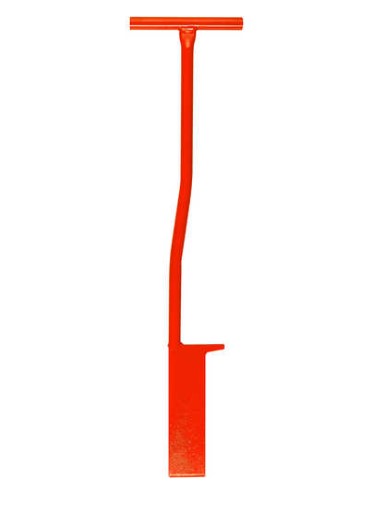
The recommended spacing for black locust trees is 8′ x 8′ or 64 square feet per tree. An acre contains 43,560 square feet, so 680 trees per acre will be required. The Indiana Department of Natural Resources sells seedlings to landowners very cheaply, approximately $0.35 each (Must buy in sets of 100). Some years they have black locust available. They ship these seedlings with bare roots.
Planting this many trees sounds like an insurmountable task, but they can be planted quickly with a planting bar (Also known as a dibble bar). According to the Indiana Department of Natural Resources, “A rough estimate is that an inexperienced, but physically fit, tree planter can plant 1,000 to 3,000 seedlings per day.” Here’s a video that shows how to use one. You can purchase one from home improvement stores likes Lowes and Home Depot. You can also order one online from Forestry Suppliers.
Avoid planting black locust close to houses and other buildings. It has shallow roots, which makes it more likely to be toppled due to strong winds. Although shallow, their roots spread wide, up to one and a half times the height of the tree. This is another reason to keep them away from buildings.
The University of Kentucky Department of Horticulture lists some black locust cultivars. We highly recommend planting generic black locust seedlings. They are much cheaper and just as good for firewodd.
Black Locust and Livestock
The bark, leaves and seeds of black locust contain toxic compounds called toxalbumins, which are poisonous to humans and livestock. Despite this, Cairncrest Farms and Brett Chedzoy believe black locust is an excellent addition to pastures. They point out that since black locust is a legume, it fixes nitrogen in the soil, which acts as fertilizer for the grass. They also harvest the trees to use them for fence posts. Their flowers provide pollen for honeybees. Mr. Chedzoy does recommend introducing livestock that are not accustomed to black locust gradually and monitoring their health.
Although black locust is native to North America, it was introduced to Europe in the 1600s. They became especially popular in Hungary, where about one-fifth of their forest trees are now black locust. Much of their honey production comes from these trees. Over the years Hungarians have selectively bred black locust and now have some of the best trees in the world.
Growing Black Locust
Black locust trees do not require fertile soil, which is why they are often used for land reclamation. Black locust trees are often planted after strip mining has reduced soil fertility at a site. They grow fast, but their trunks rarely exceed four feet in diameter. In the springtime they produce many white blossoms. By fall there will be numerous seed pods, which are a few inches long.
Watch Those Black Locust Tree Thorns!
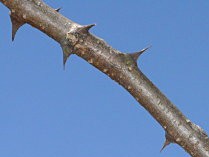
In addition to the fact that it can take over an area if not properly controlled with moving or other measures, There is another unpleasant trait of black locust – It has thorns. These thorns are quite sharp and can be over one-half inch long. Wearing gloves is highly recommended when dealing with black locust trees, logs, and branches. The website Firewood for Life highly recommends using latex dipped gloves and rates them as superior to leather gloves when dealing with black locust thorns.
Splitting Black Locust Firewood
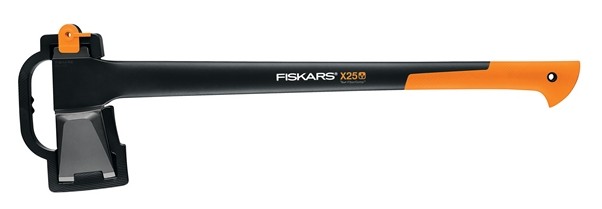
After felling, black locust firewood should be cut to the appropriate length for your stove or fireplace. It should also be split before seasoning. This will allow it to dry faster.
There is a great diversity of opinion when it comes to splitting black locust. Some say it’s easy white others say it’s hard. Personally, I rate it as moderately difficult.
If you need an axe to split your wood, the Fiskar’s 28-inch X25 splitting axe comes highly recommended (4.8 out of five stars on Amazon).
Seasoning Black Locust Firewood
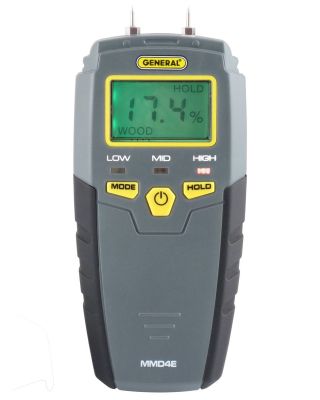
Before burning firewood, it needs to be allowed to dry. Firewood should be seasoned at least 6 months, and preferably a year prior to use. Green black locust wood has a moisture content of approximately 27 percent. The moisture level should be no more than 20% when burned. Moisture meters are available to measure this if you want to be precise. Sun and wind will help dry out your wood. Therefore, try to stack it in a spot where it will get some of both. Raising the bottom layer off the ground will also help. Late fall is a good time to harvest black locust, since it will usually have less moisture.
There are several reasons high moisture content in firewood is undesirable:
- It will create more smoke.
- It will produce more creosote, which can build up in the chimney.
- It will produce less heat, since the moisture will absorb heat as it converts into water vapor.
Black locust firewood will suffer little damage during the drying phase, due to its high resistance to rotting. This property also makes it a good choice for fence posts.
Selecting a Wood Burning Stove
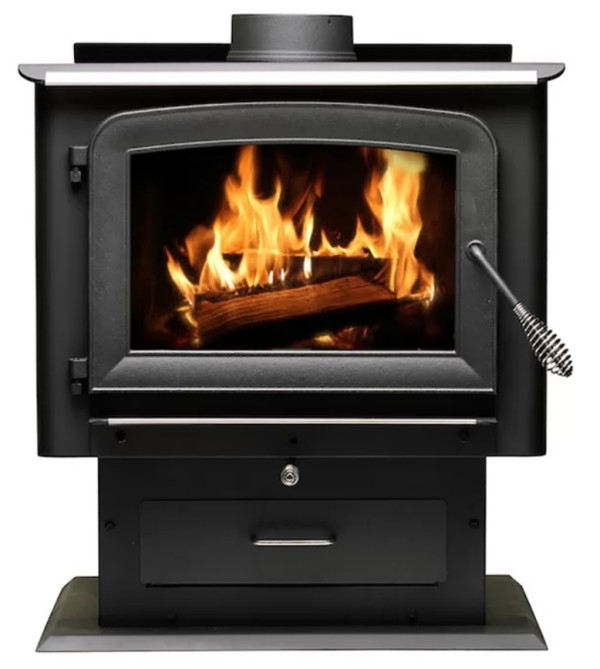
It’s important to make sure you get a wood stove that’s right for your needs. Since black locust firewood burns hot, make sure to buy a high quality stove. Stoves that are sold today have to meet strict EPA standards. They can emit no more than two grams of smoke per hour.
There are two types of woodburning stoves: Catalytic and non-catalytic. Both types burn very efficiently. Non-catalytic stoves are simpler to operate. Catalytic stoves are slightly more efficient and requite a little more maintenance and are slightly more efficient. Here’s a video that shows how to operate a catalytic wood burning stove.
The most important decision you have to make is how much space do you intend to heat? This will dictate how many BTUs that your stove must put out to keep you warm. There are a number of other factors that will also affect the required heat output, such as:
- What is your desired temperature? Obviously, it will take more heat to keep your house at 72 degrees than at 65.
- How well insulated is your home? Better insulation will reduce the required heat output.
- How cold is it outside? Homes located in Minneapolis, MN require more heat than those in Nashville, TN.
To get a better idea of the heat output you will need form your wood stove, it is best to talk to a dealer in your local area.
There are numerous other factors to consider when choosing a stove. Some can burn slightly longer pieces, which may lessen the amount of cutting you need to do on your firewood. A larger firebox will allow you to place more wood inside, which might eliminate the need to get up in the middle of the night to add more wood.
Burning Black Locust Firewood
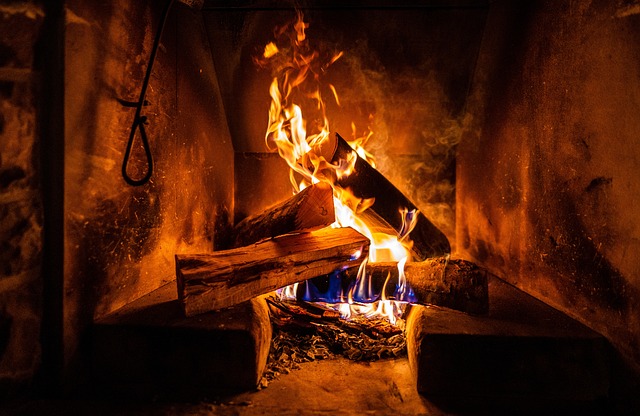
It is difficult to start a fire with black locust, so it’s best to begin with some other firewood. Once you have a good fire going, you can begin adding pieces of black locust. Black locust burns very hot, and there are reports of woodstoves glowing orange from it. You probably want to keep an eye on your stove the first time you use it. If it does get too hot, mix in some other firewood with your black locust.
Once the fire has started, it should burn for an extended time and leave a good bed of coals for the next load of firewood. Just remember to watch out for those thorns when you add firewood. Black locust usually burns almost completely, leaving very little ash.
Distributing the Heat
By burning black locust firewood, you should be able to generate plenty of heat. However, you may not be satisfied with the distribution of that heat. If not, you have three options. One is to get a stove top fan, also called an thermoelectric fan or eco fan (Ecofan is the original creator of this product). They are made of metal and sit on top of the stove. They generate their own electricity from the temperature difference between their bottom surface, which contacts the stove, and their top. Therefore they don’t need batteries or a power cord. They are virtually silent, but they don’t move a whole lot of air.
If you need something that will move more air around the room, there are blower kits available as add-ons for most wood burning stoves. These need to be plugged into an electrical outlet. Some have a variable speed control which you can adjust. It is also possible to use a wood burning stove with central heating. You’ll probably want to hire a professional for this.
How Can I Get Free Firewood?
You can use the contact form at the bottom of our Home Page. We often have to dispose of wood after removing trees. We’re happy to give it away for free. Just realize that it will be in big chunks that you will need cut down to size and split. Also, this wood may come from a variety of trees, and may be less ideal for firewood than black locust. Another way to get free firewood is to go to Craigslist and do a search for “Free firewood.”
If you want to purchase firewood in the Indianapolis area, try Firewood King. They are a family owned business that has been servicing customers since 1981. They have a variety of hardwoods, and they can deliver for a fee.
